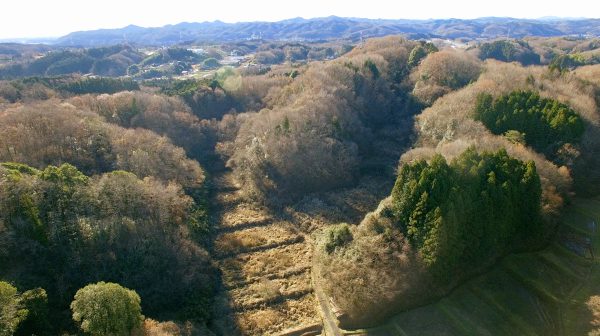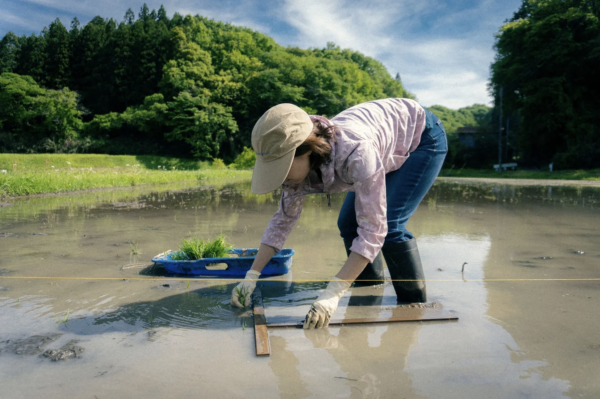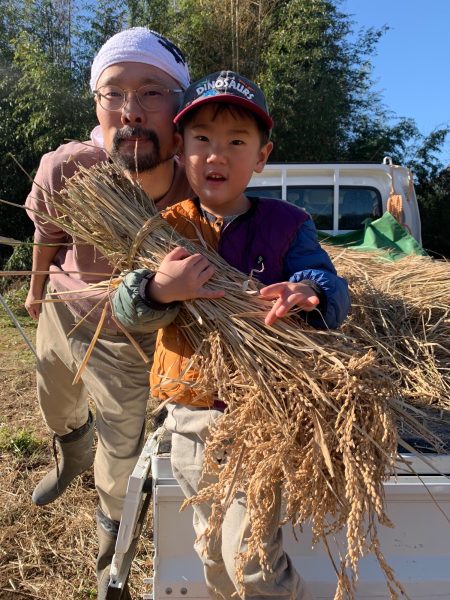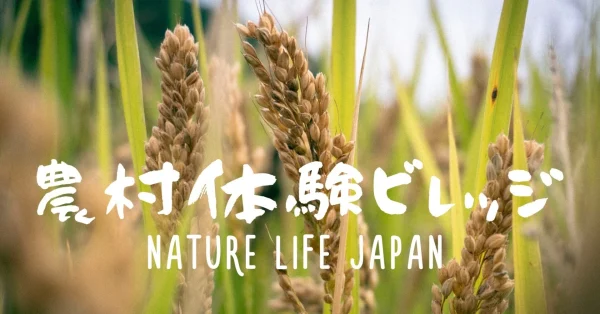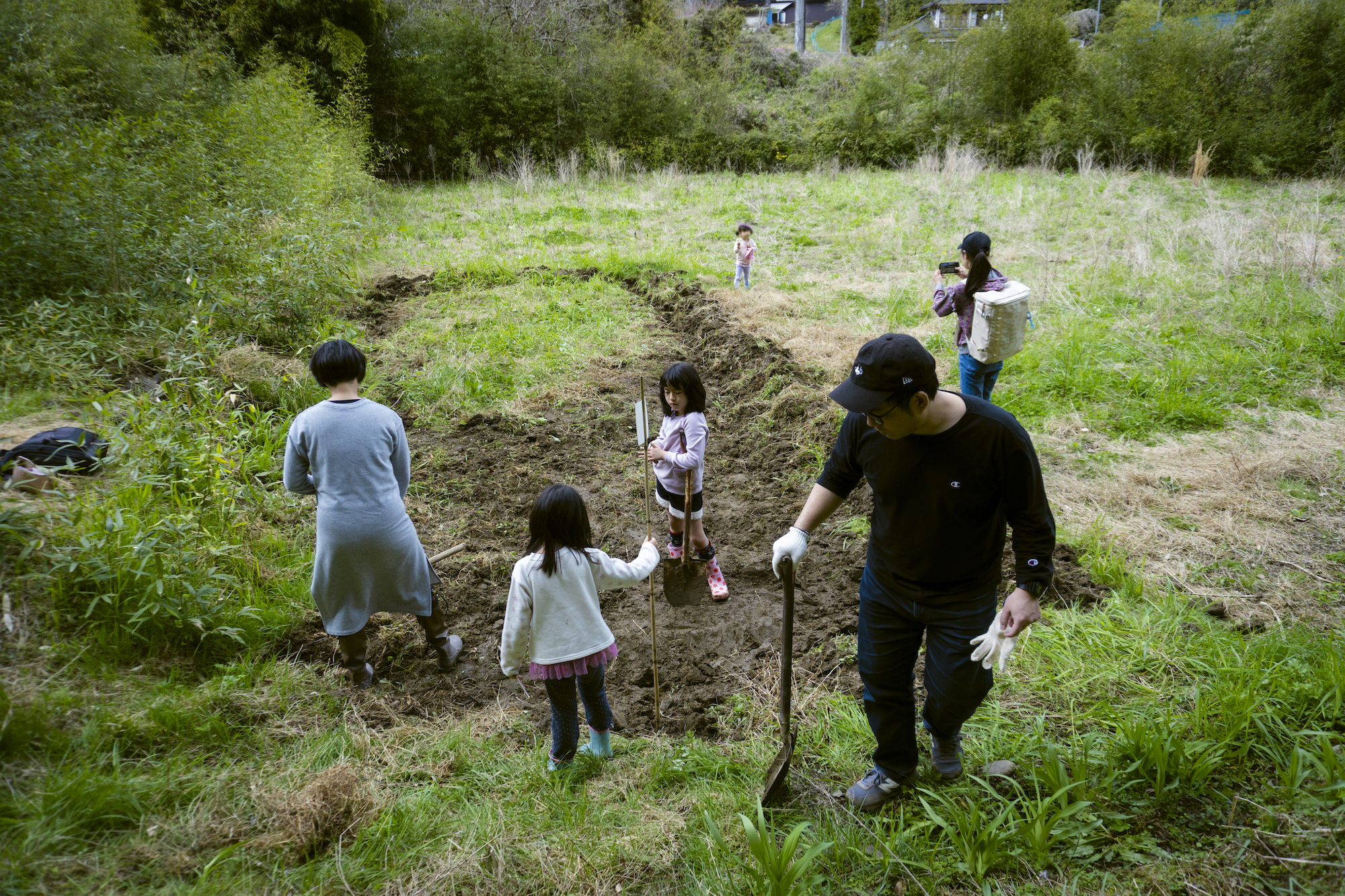
茨城県北の里山の清流でお米づくりをしています。無肥料&無農薬でなるべく人工的なものを使わずに自然のエネルギーを活かした自然農の考え方をベースにお米を育てています。
We do practice natural farming and growing rice in the northern Ibaraki. No Pesticide no fertilizer. We simply uses the power that the nature provides.
WISH HOUSEで自然農のお米づくりをする理由
- 健康的な食べ物を次世代に繋げていきたい Healthy food for our children
- 地方に広がる耕作放棄地を活用し里山の景色を再生したい Revitalizing abandoned land in the countryside
- 大人や子供がお米づくりを楽しく体験できるコミュニティを作りたい Creating a community in a rice paddy
- 子供食堂などに提供したい Provide rice to the economically disadvantaged kids
WISH HOUSEでは大人も子供も気軽にお米づくりを体験できるイベントを1年を通じて複数開催しています。田んぼを整えたり、土の準備をしたり、お米のタネを蒔いたり、稲刈りや脱穀や精米をしたり、お米が出来上がる過程を体験いただけます。ご興味ある方は是非、お気軽にご連絡くださいね。(イベント情報もHPに更新していきます)
We have so many events throughout the year surrounding the rice paddy at WISH HOUSE that you join and participate. Family and kids are super welcome! Feel free to contact us. Let’s cultivate!
WISH HOUSEでのお米づくり
当初は東京から茨城に通いながら(車で2時間)、活用させていただける耕作放棄地を探しました。茨城県北部の山村にある耕作放棄地をオーナー様が快くお貸しくださり田んぼの再生がスタートしました。
We initially began by looking for any abandoned land that were available to us which we hope to find within the 2 hour driving distance. We finally found the generous owner who let us use the land for cultivation.
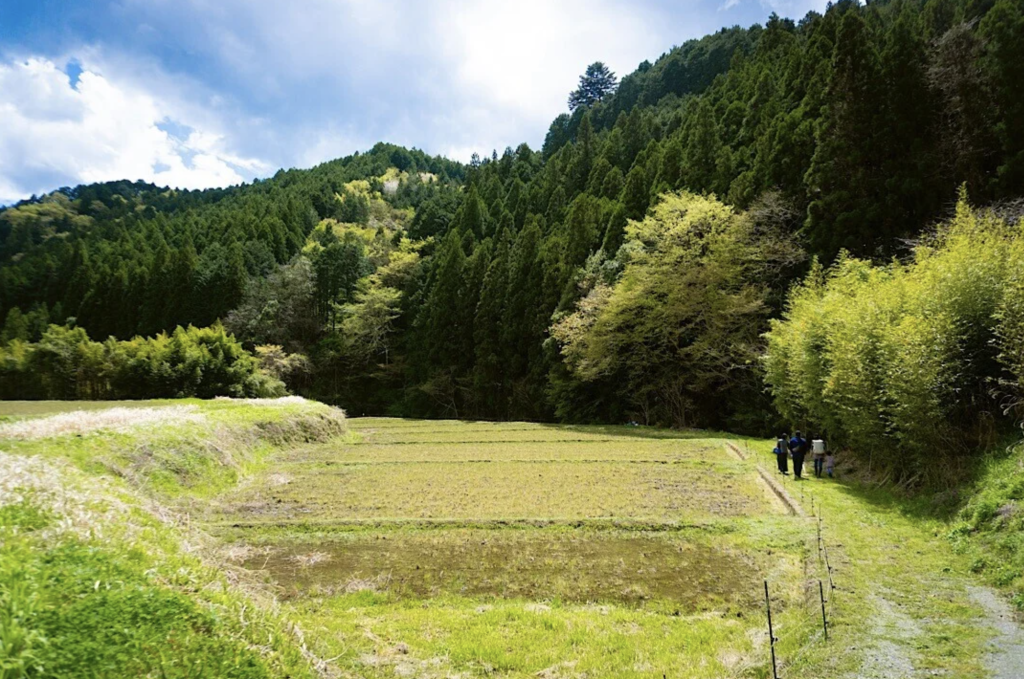
耕作放棄地は約3年ほど使われておらず、田んぼの畔(あぜ)もない状態でした。田んぼで使う水も必要になります。綺麗な沢の清流でお米を作りたいと思っていましたが色々と調べていくと「水」には様々なハードルがありました。昔の人が水の権利問題でもめたという歴史もよく耳にしましが、それだけ水というものが大切なのだと思い知らされました。
The paddy was abandoned over 3 years and even the ridges had to be rebuilt for pooling water in the paddy. The most obvious thing that were needed was pesticide free clean water but as I’ve learnt about the history of water usage rights, it was much more complicated than I thought. No wonder how people use to fight over water in old days…
豊かな水と土 RICH SOIL and WATER
まず集落が所有する農業用水路から水を引っ張るのですが、それには集落の許可が必要です。それに水は自由に使えるわけではなく集落が使用する時期にだけ自分たちも使用できるので、集落が使用していない期間は水が使えません。さらに農薬や肥料を使って育てている農家さんが日本はほとんどですので農業用水路の水は農薬が混ざっています。そこで私たちは山からくる沢の水を引っ張ってきて田んぼまで水を流すというチャレンジをしました。想像以上に重労働でしたがなんとか完成することができました!
We needed to get the official permit from the village that our paddy was located in. But even if we get the permission, we are not allowed to use it for 12month a year as other farmers stop using them in autumn to dry their paddies which is the typical practice for the industrial farming. Plus the water normally is contaminated with pesticides.
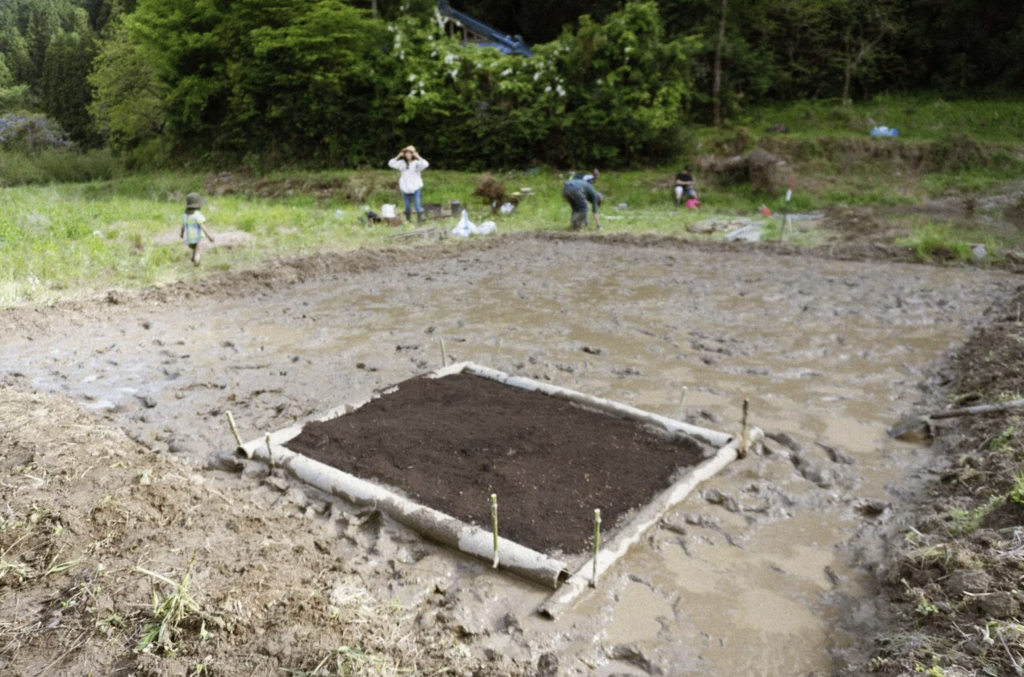
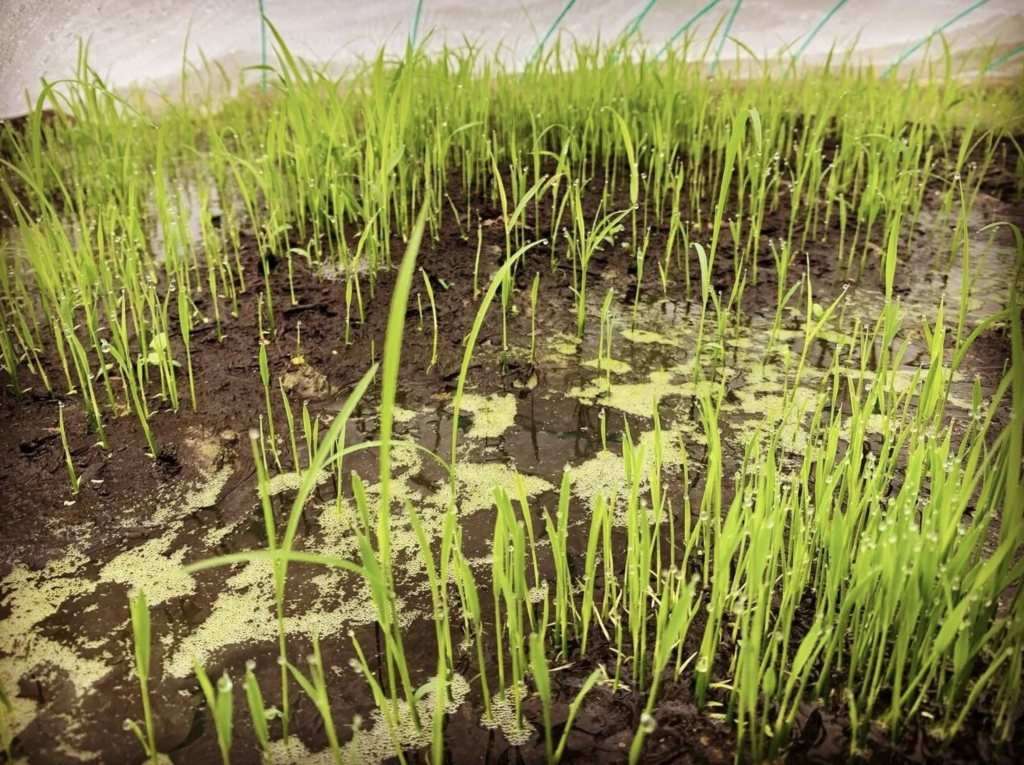
私たちは沢の水を使って、冬の間も田んぼに水を流し続ける農法に挑戦しました。現代の主流は冬の間は田んぼを乾燥させておくのですが、自然農のやり方の一つに「冬水たんぼ」or「冬期湛水とうきたんすい」というものがあります。冬に水を枯らさないことで田んぼに住む微生物や虫たちを殺さないのです。田んぼに生きる様々な生き物が田んぼの土を肥やしてくれます。それによって人工的に肥料を与える必要もありません。
So we decided to use the clean water that was flowing from our valley. We had to make our own irrigation system and that was the hardest work! We also wanted to use the water even during the winter time to keep the moisture in the paddy to let microbes and insects can live in or near the paddy. They are the ones who make the soil richer so that we do not need any fertilizer!
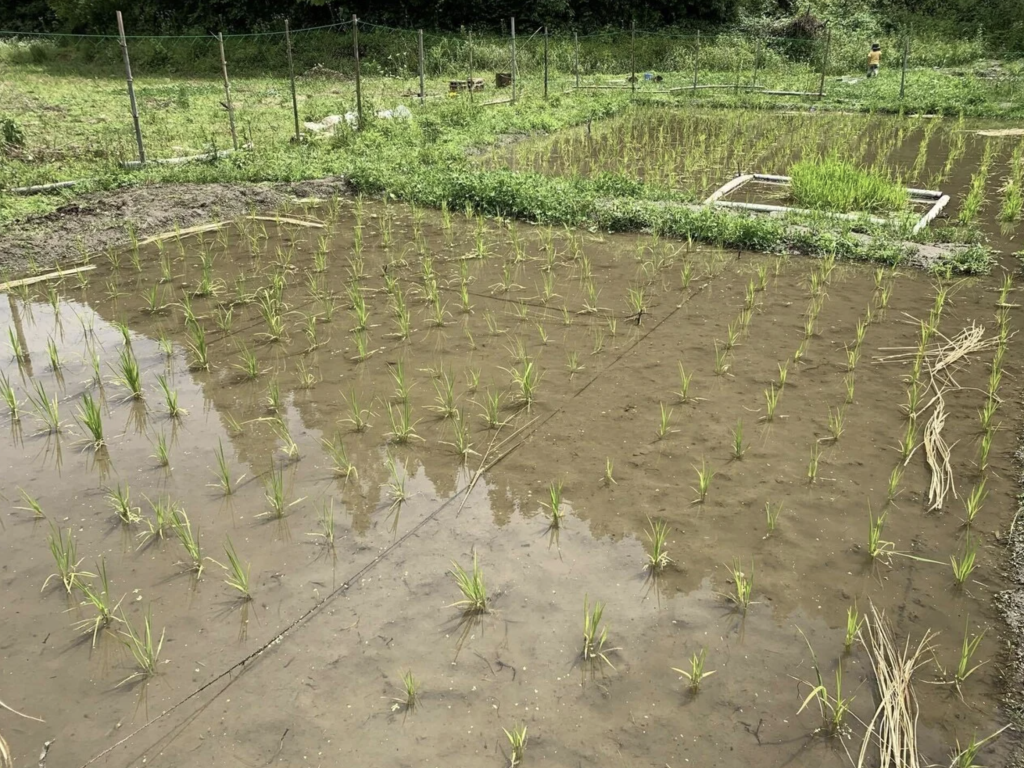
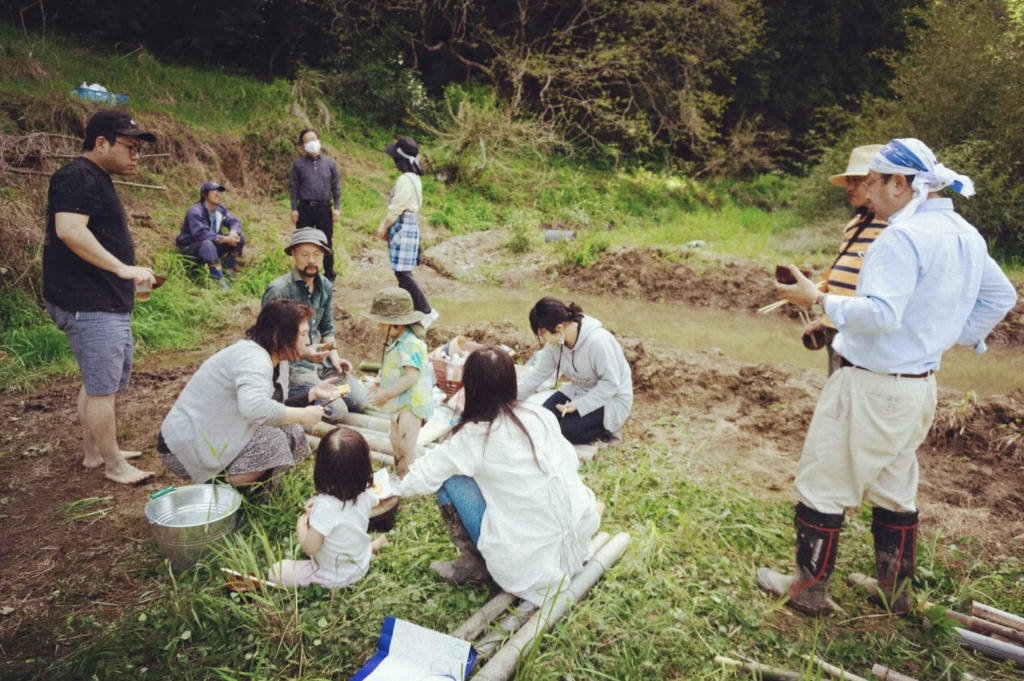
人工的に肥料を与えると、特定の種類の虫が大量発生します。それを農薬で殺すのが現代の農法です。そんなことはせず、生き物の溢れる豊かな田んぼを作り、自然の生態系が自らバランスを取り合うので害虫の大量発生は起こりません。
Fertilizer will create unbalance in the nature to usually create outbreak of certain insects / pest damage. In natural farming this will not happen.
生態系のバランス HARMONY
水を田んぼに引き込んで土をふみふみして田んぼらしく作り上げました。初年度はイセヒカリとチベット黒米の2種類を育てることにしました。種まきもハウス栽培ではなく田んぼに水苗代(みずなわしろ)という種のためのベッドをこしらえました。種が水没しないように水面ギリギリの高さに(湿地帯のように)作りました。
The first year, we made ISEHIKARI and TIBETAN BLACK RICE. We use the seedling in the paddy instead of using a plastic house. We had to make sure that the seeds will not be submerged and stayed just on the water surface level.
稲はスクスクと育ちました!体験者のみんなと再生した耕作放棄地で種を蒔いて、その種籾から芽が出たときの喜びは言葉では中々表現できません。そして苗の葉が5枚程度の大人の苗に育ったタイミングで移植します。つまりみず苗代から苗を摘み取って、それを田んぼに”田植え”するのです。
And can you imagine how strong these rice are!? They grow with so much energy! Knowing how hard it was to cultivate the land with all the participants and volunteers to revitalize the place, the joy was indescribable in words.
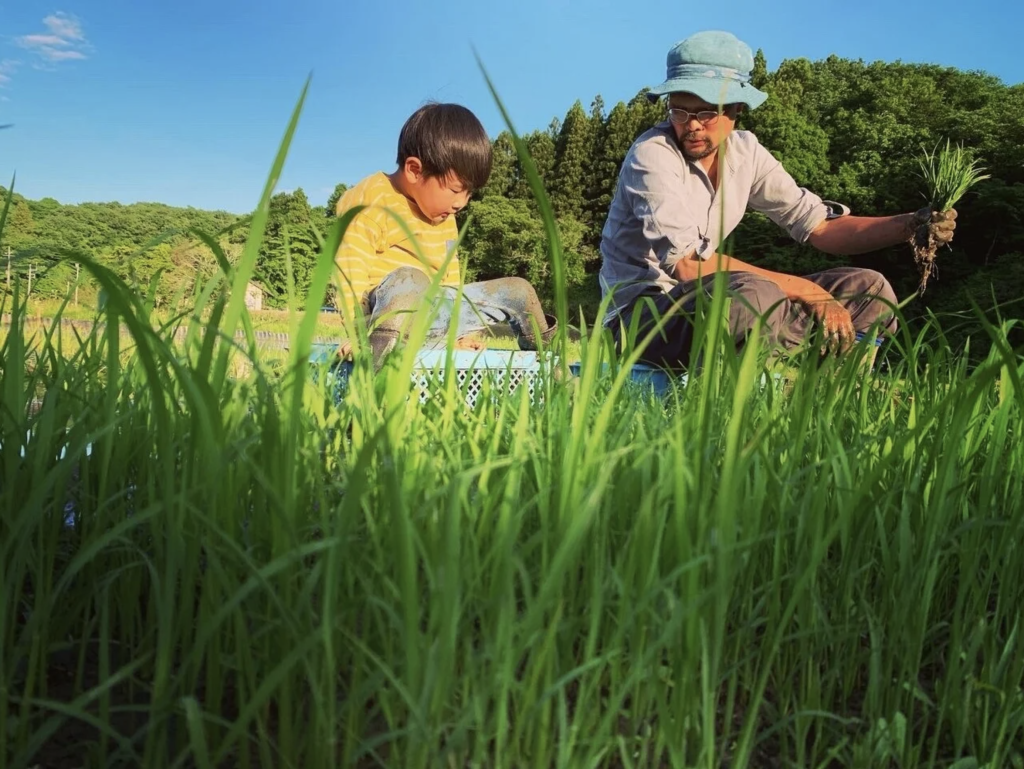
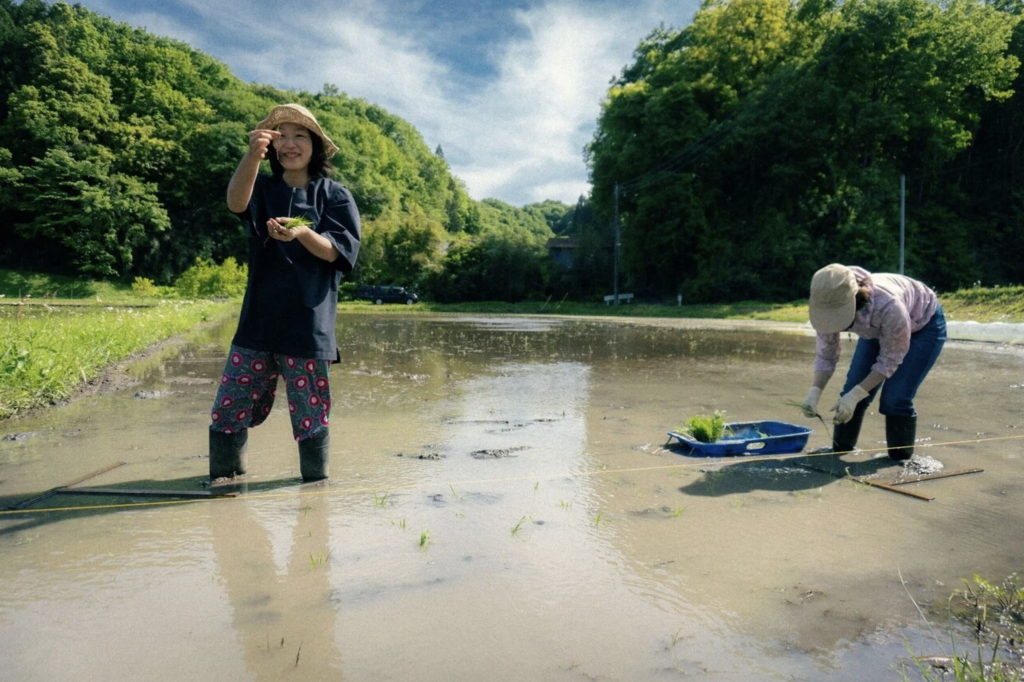
稲は驚くほどの生命力で育っていくのですが、周囲に生えた草やひえを摘み取る作業もありました。稲の光合成の邪魔にならないように雑草を取り除く作業です。でも、全部綺麗さっぱり取り除く事はしませんでした。何事もバランス。それが自然農の教えてくれる魅力でもあります。一品種だけの野菜やお米を育てる環境って実はとても自然界では不自然な状態なんです。そういう人工的な場所には虫が大量発生したり、病気が発生したりしやすい。なので、ある程度の雑草は許容範囲内として共存させました。
We had to also take care of the weeds which competes against or with the rice. The key was to NOT to over do it. Of course removing all the weeds will be ideal for rice to perform photosynthesis. But what about the diversity of nature with other microbes and insects? To avoid any outbreak, we maintained and allowed certain amount of weeds to also live in the paddy.
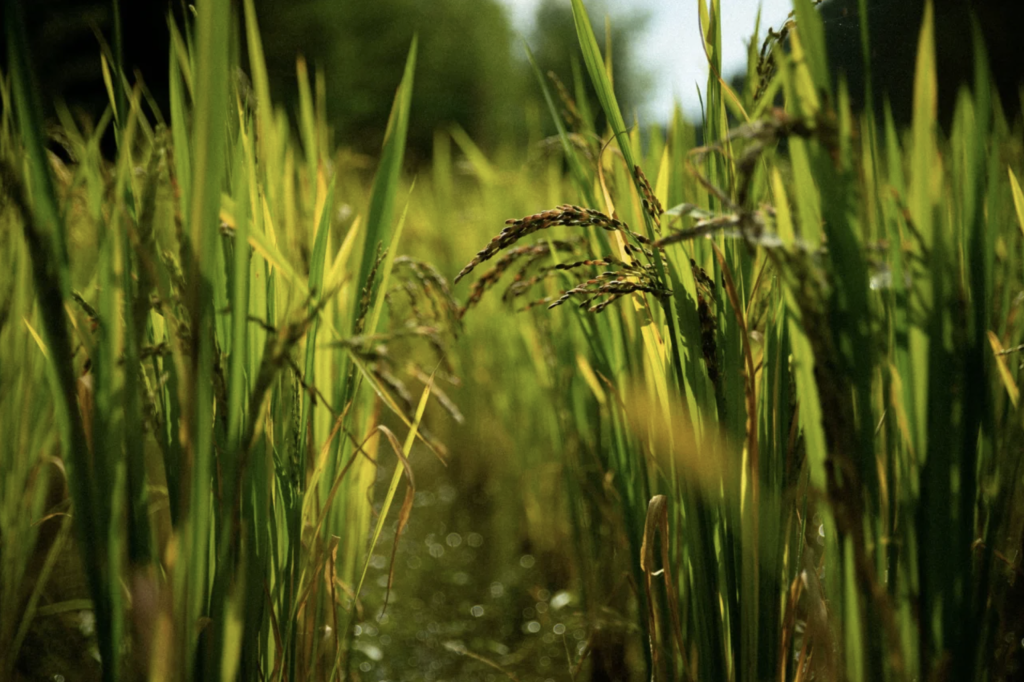
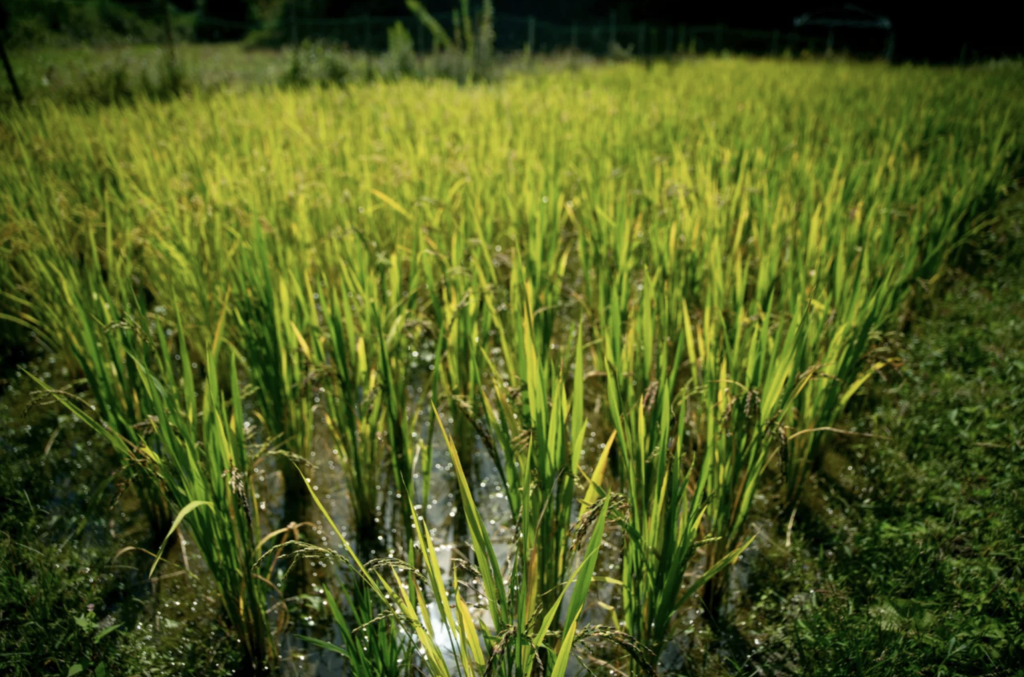
お米たちは立派に育ちました〜!こんな具合に大人も子供も自然から発見や学びを得ながら楽しくお米づくりをしています。
活動2年目からは田んぼの面積を増やして3反(約3,000㎡)でお米を育てています。いつでも参加したい方は遊びに来れるのでお気軽にご連絡くださいね🌾
And our rice grew so well in the end. The natural farming will make us discover the essence of nature and how we live with the nature in harmony. Ultimately how we can find harmony within ourselves. From the 2nd years on, we have expanded our paddy to 3,000㎡. If you are interested in natural farming or rice paddy, feel free to contact us and join us.
自然農の精神や考え方を福岡正信さん、岩沢信雄さんから学びインスパイアされてお米づくりを行っています
We are inspired by Masanobu Fukuoka and Nobuo Iwasawa’s philosophy about natural farming


